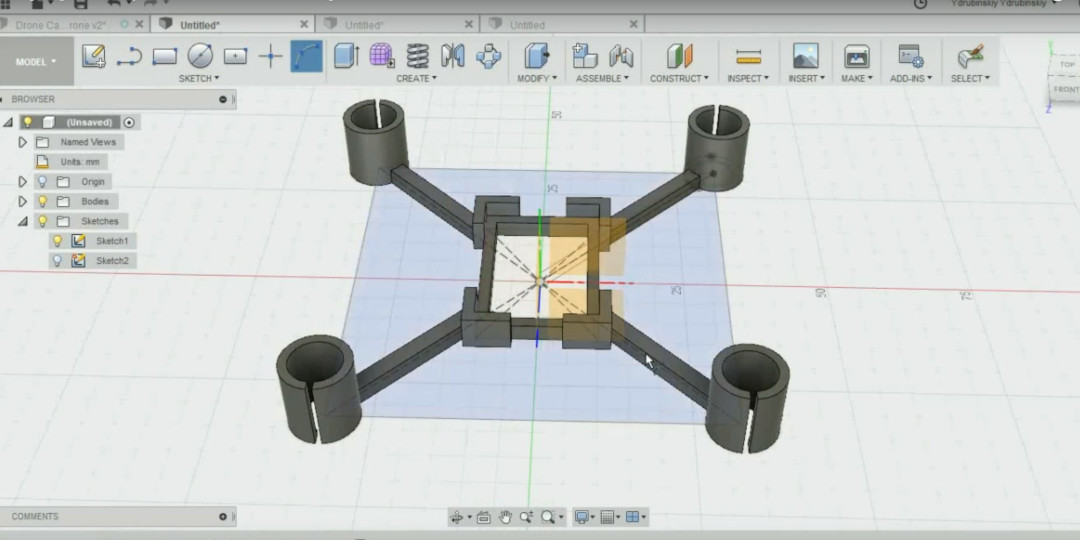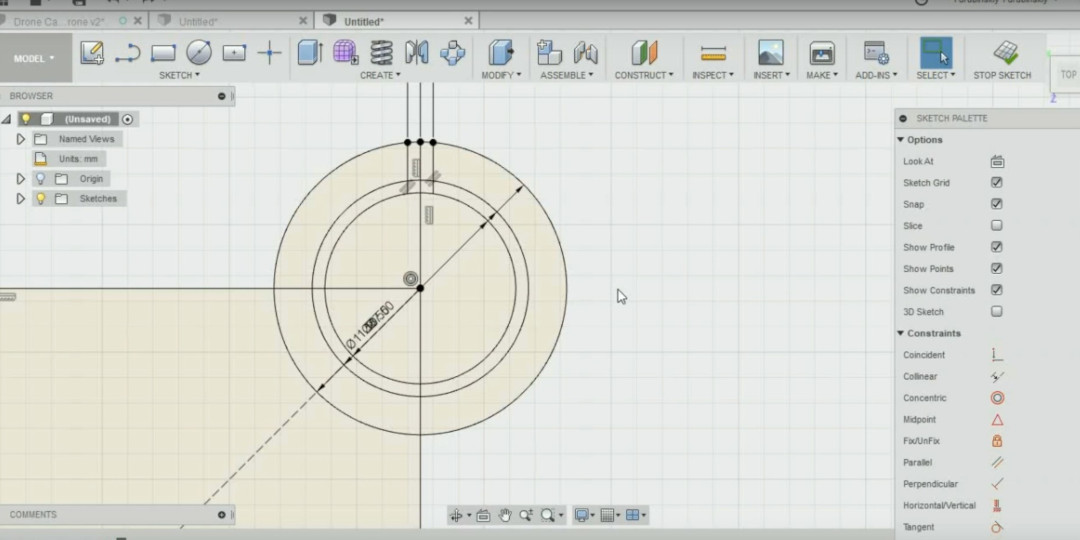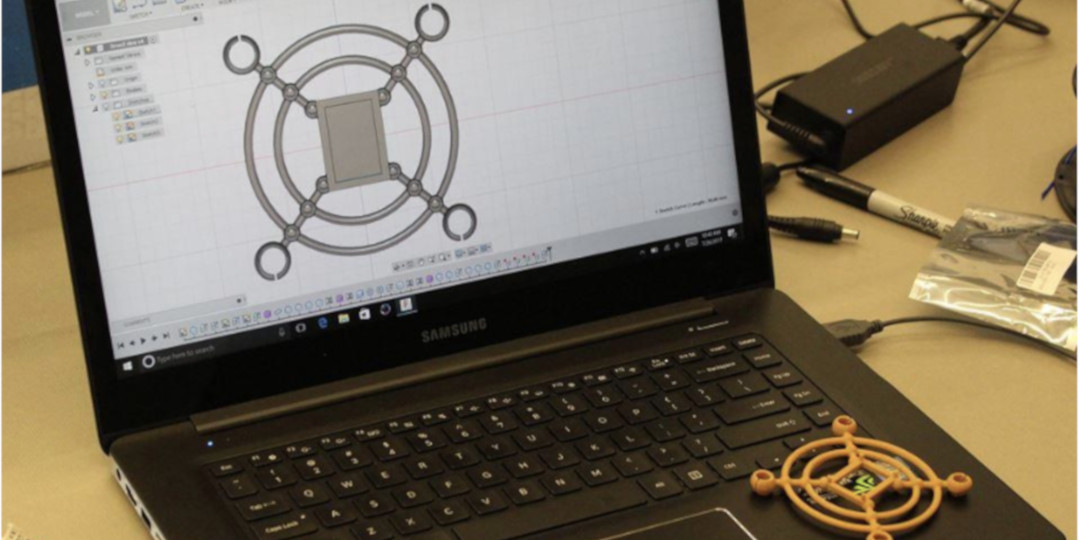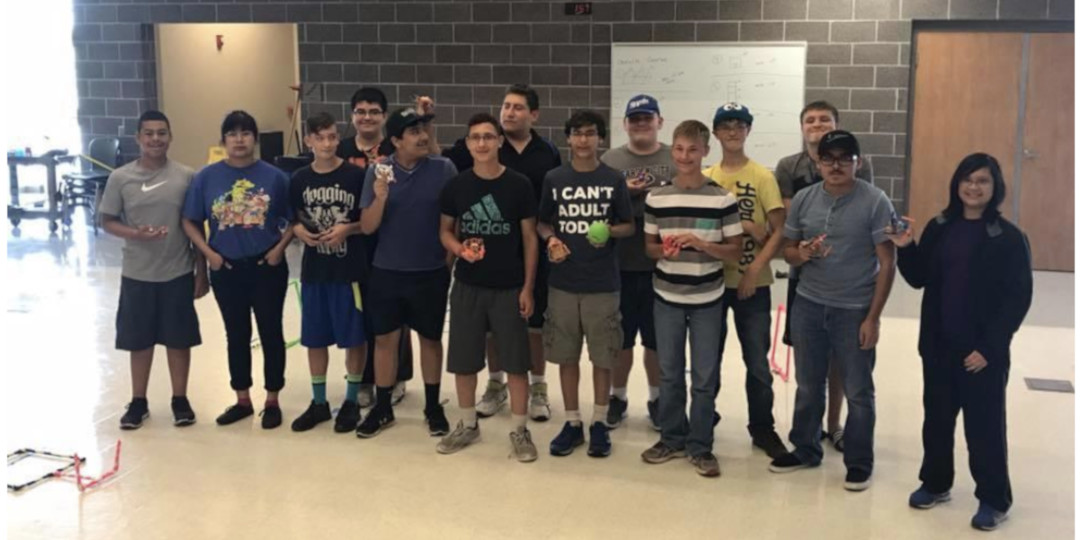Pioneer Yuriy Drubinskiy writes about his experience leading a summer program and how creating drones with 3D printing brings form, structure, and design together.
We recently wrapped up a week-long robotics camp for upper middle and high school students centered around drones. This was my first experience organizing a camp where drone design and 3D printing were the primary focus.
There were two main tasks for students during the camp. The first task was coding pre-made quadcopters to complete autonomous flight challenges using the Arduino microcontroller. The second task and the one which I will focus on is the design and construction of a custom made microdrone.
Why drones? For me, there is something special about creating a machine that can leave solid ground and has the ability to fly. I have been building robots since college, but drones open up a whole new realm of possibility. On a more practical level, drones are becoming more prevalent and practical. Understanding how drones are shaping today’s society and how they will help shape the future was a theme I wanted to explore with the students in the camp.
Another theme of the camp was the aerodynamics of flight. Students were tasked with considering factors such as weight, shape, structural integrity, and style of the drone they designed. Furthermore, students were asked (and given the freedom) to be creative in the aesthetic look of their drone. The interplay of form and function was discussed.
With a focus on form, structure, and design, there is a natural need for a way to bring those elements together. It is 3D printing that was able to tie all the elements together. Students used Autodesk's Fusion 360 to design their drone frame. The majority of the students had no previous experience with Fusion 360 and many had not used CAD software before. Students were instructed to begin by watching videos I created on using Fusion 360 to build a basic drone frame and following the instructions:
This process took one to two hours depending on the student. The students were then asked to brainstorm and sketch a few of their own design ideas. They were asked to use the skills they developed by following the instructions in the video in order to create their own unique drone frame. Students were shown the electronics and motors that they would be mounting on their drone once it was designed and printed. They were also given rulers to measure anything they saw necessary. The ability to visualize the relationship between the object on the screen and how that object would look in real life once printed was heavily emphasized.
Drone design in Fusion 360 next to the printed drone frame. To the left is the flight controller board for the custom drone.
There were a few surprises as the week wore on. The first surprise was the relative ease with which students were able to design the example drone by following the video instructions. Since most students had not worked with CAD software, I thought that they would struggle at first, getting oriented to the CAD environment. I think the intuitive interface of the Fusion 360 software really helped out. The second surprise was how unique the students’ drones were.
Group picture from the last day of camp with student-designed drones.
In a short amount of time, a few hours of work over the course of four days, students they were able to take the skills they learned in the example videos and apply them in new ways. We cycled through 4 printers, including an Ultimaker 2 to print the drone frames. As a student finished their design, we would send it to an open printer. Each frame took 1 to 1.5 hours to print on average. We found that for 15 students, the wait time for printing was fairly minimal as long as there was minimal delay between finishing a design and commencing the print. Some students required redesign for a variety of reasons, such as a motor not fitting or a mistake in measurement. We were able to support the process of iteration well with the printers on hand.
At the end of the week, students were able to take their 3D printed drone frame, along with the electronics home with them. Not a bad return for a $30 registration investment. While most students were not able to fully integrate the electronics onto the drone and have it fly, they did learn the skills they would need in order to complete the build. The camp was a great learning opportunity for both the students and myself as an educator, and it was the technology of 3D printing that really made an opportunity like this possible.



























